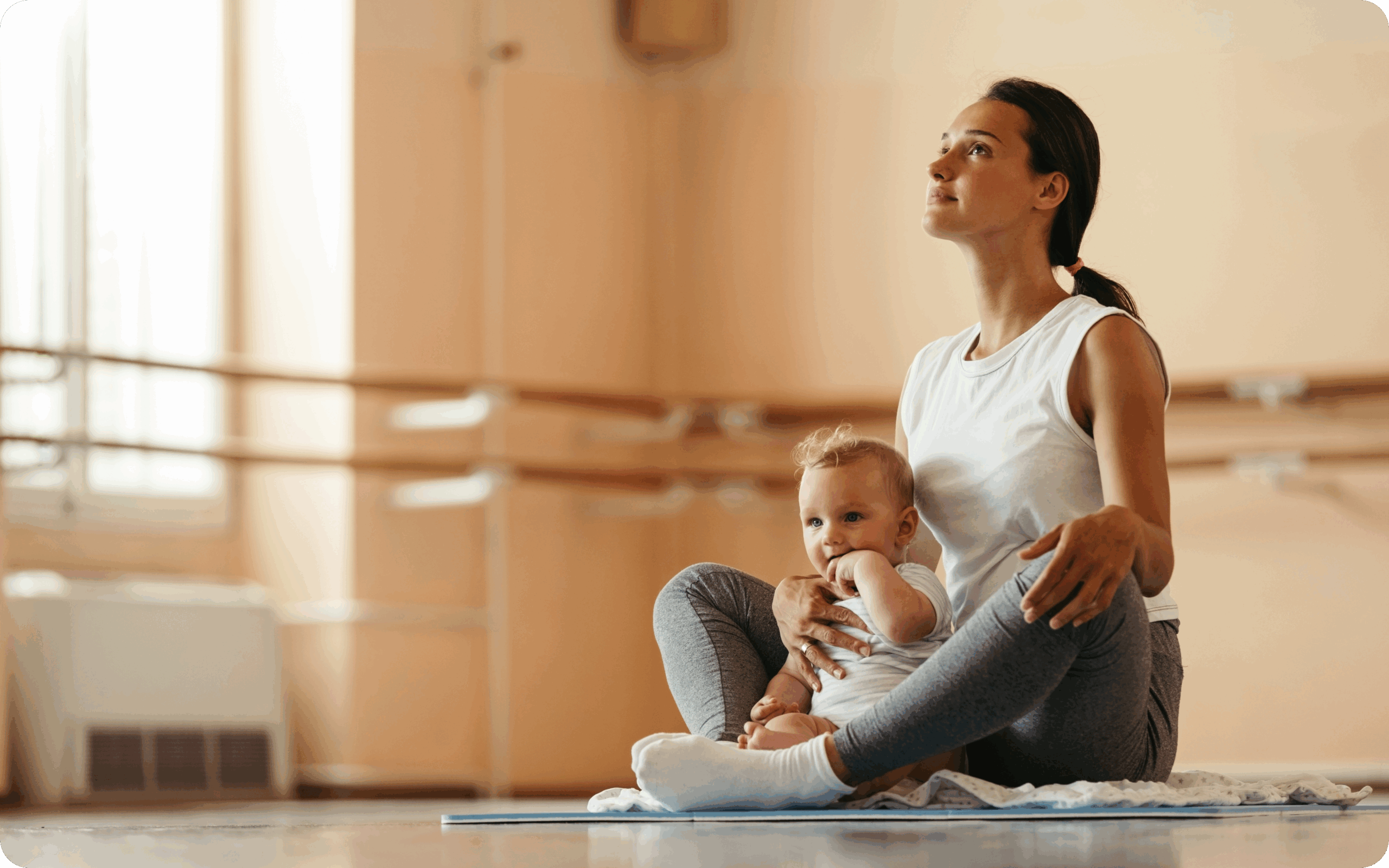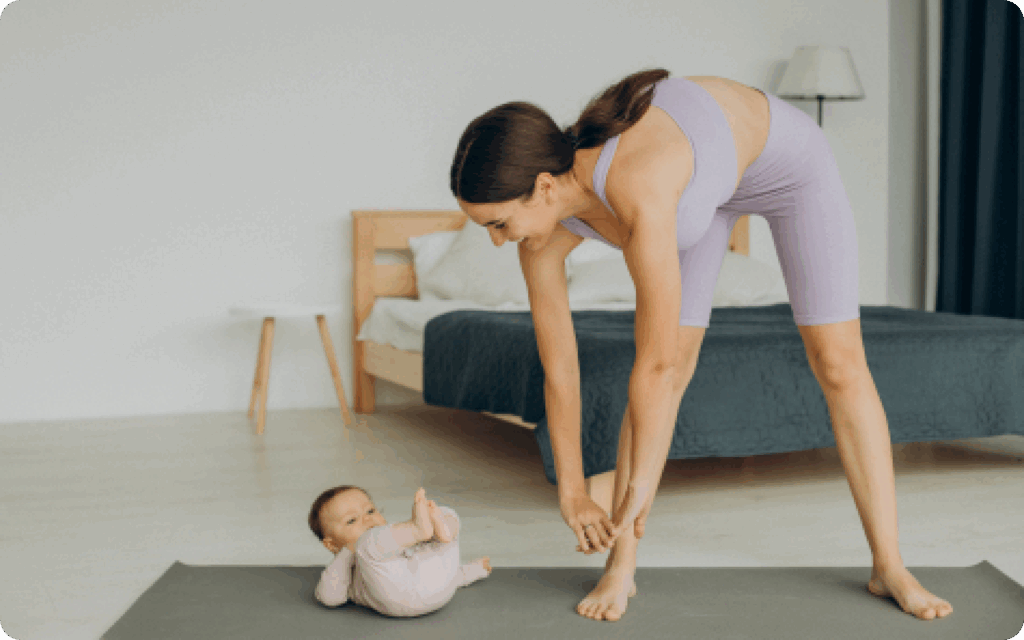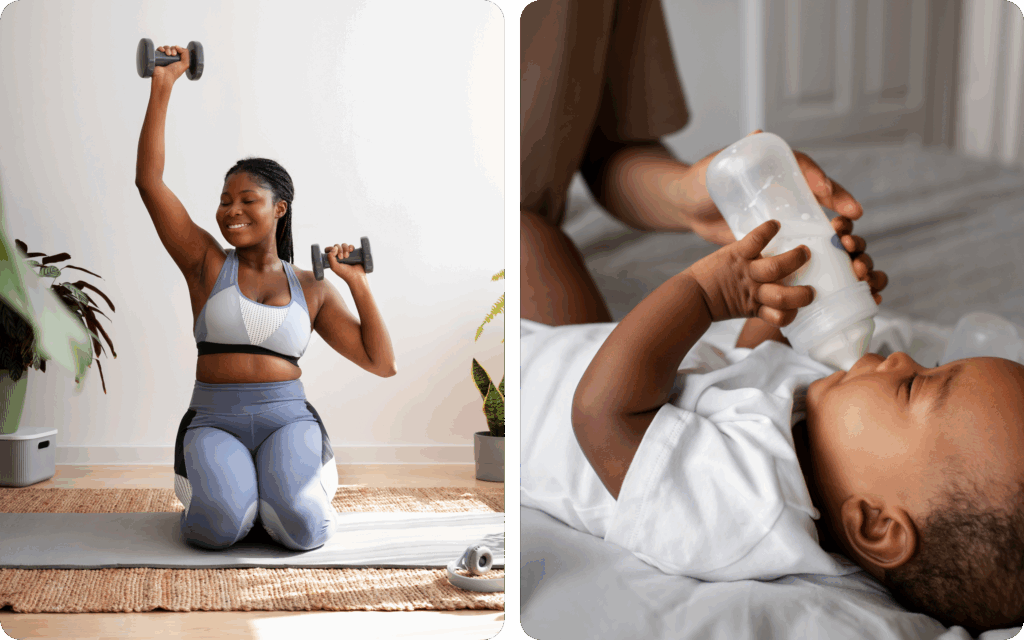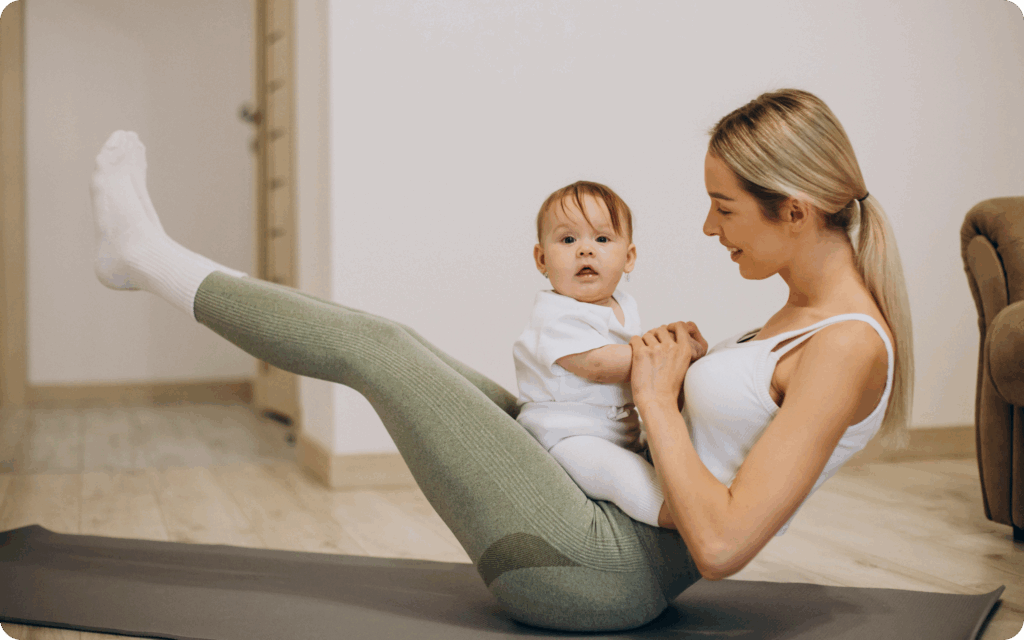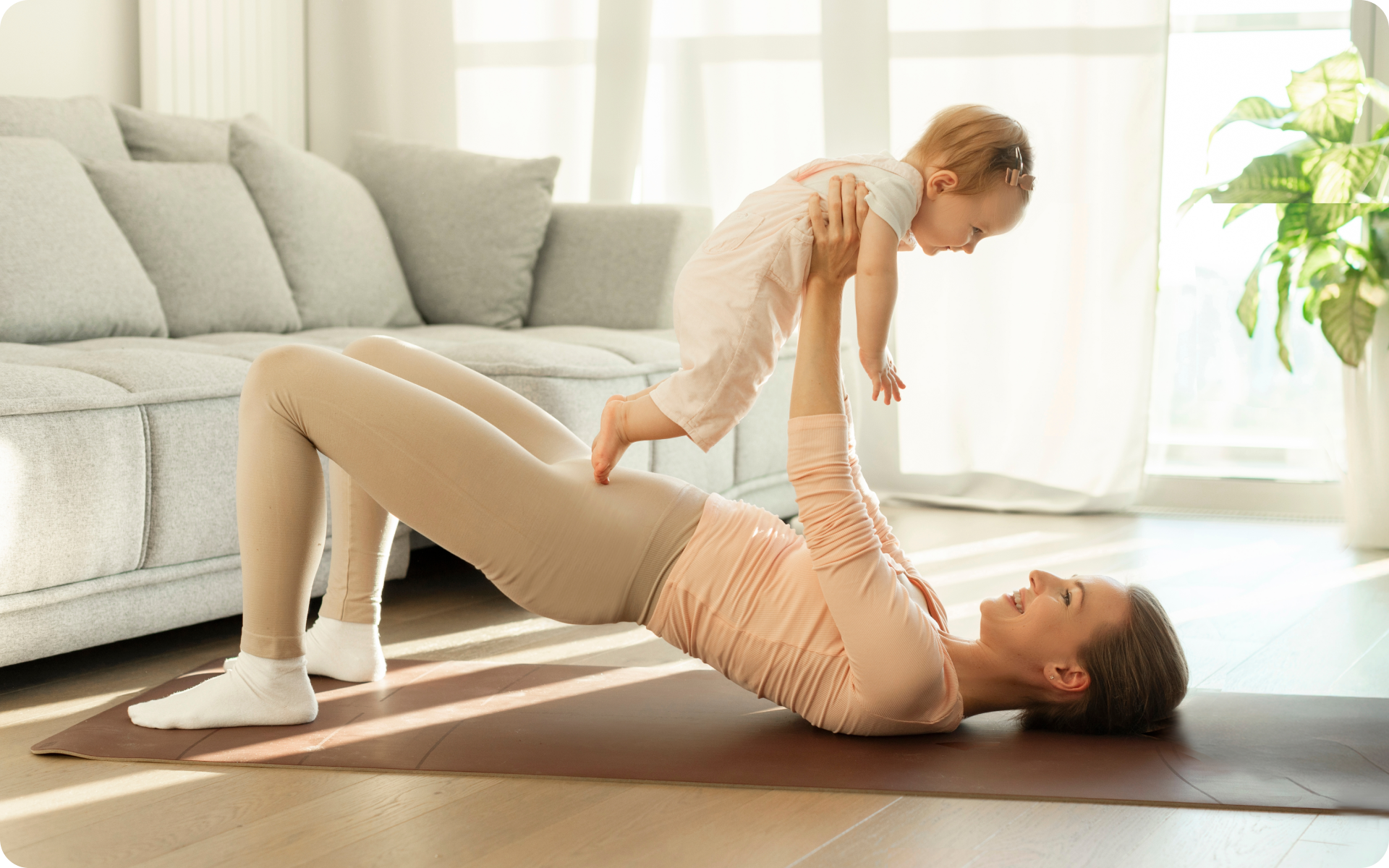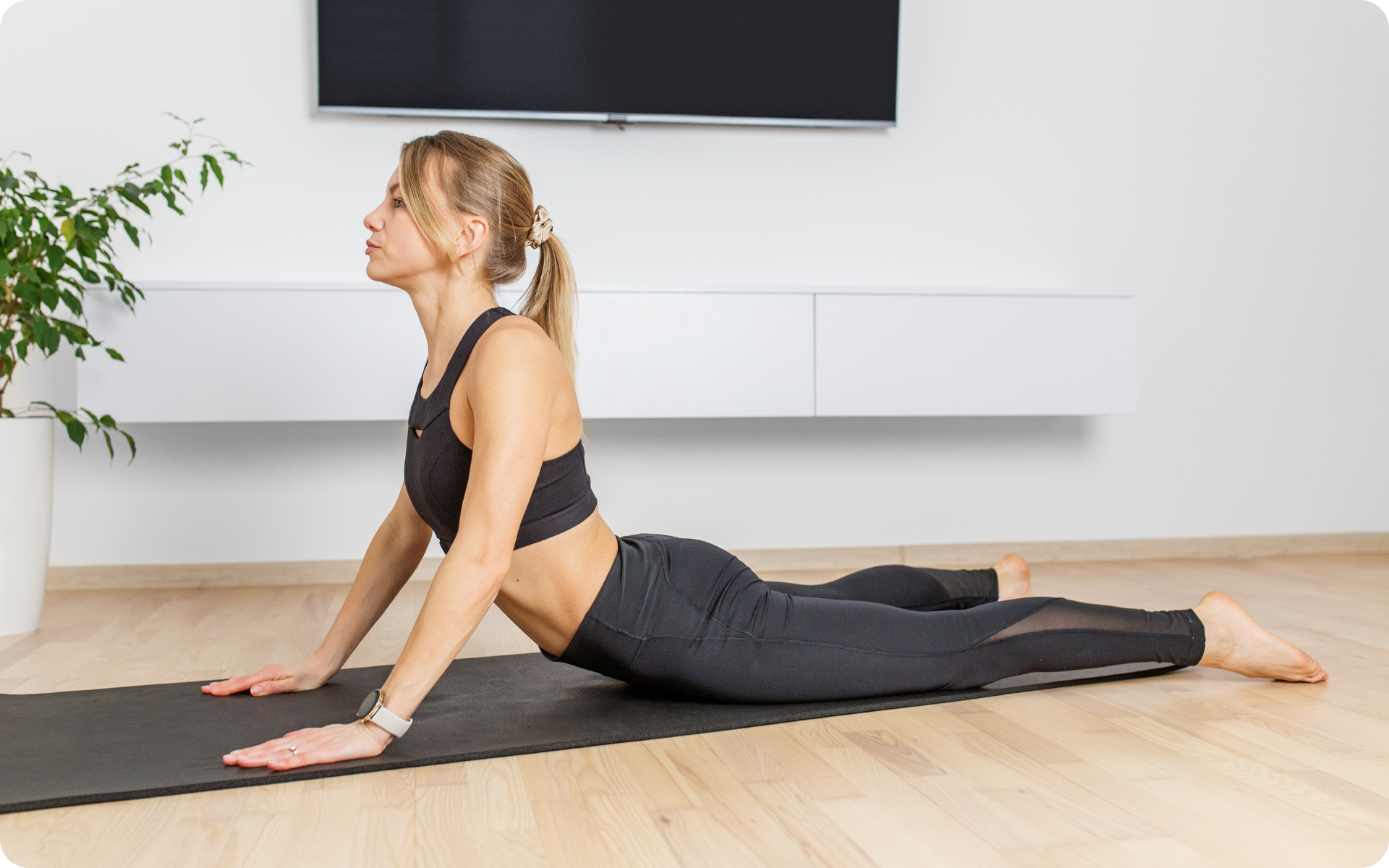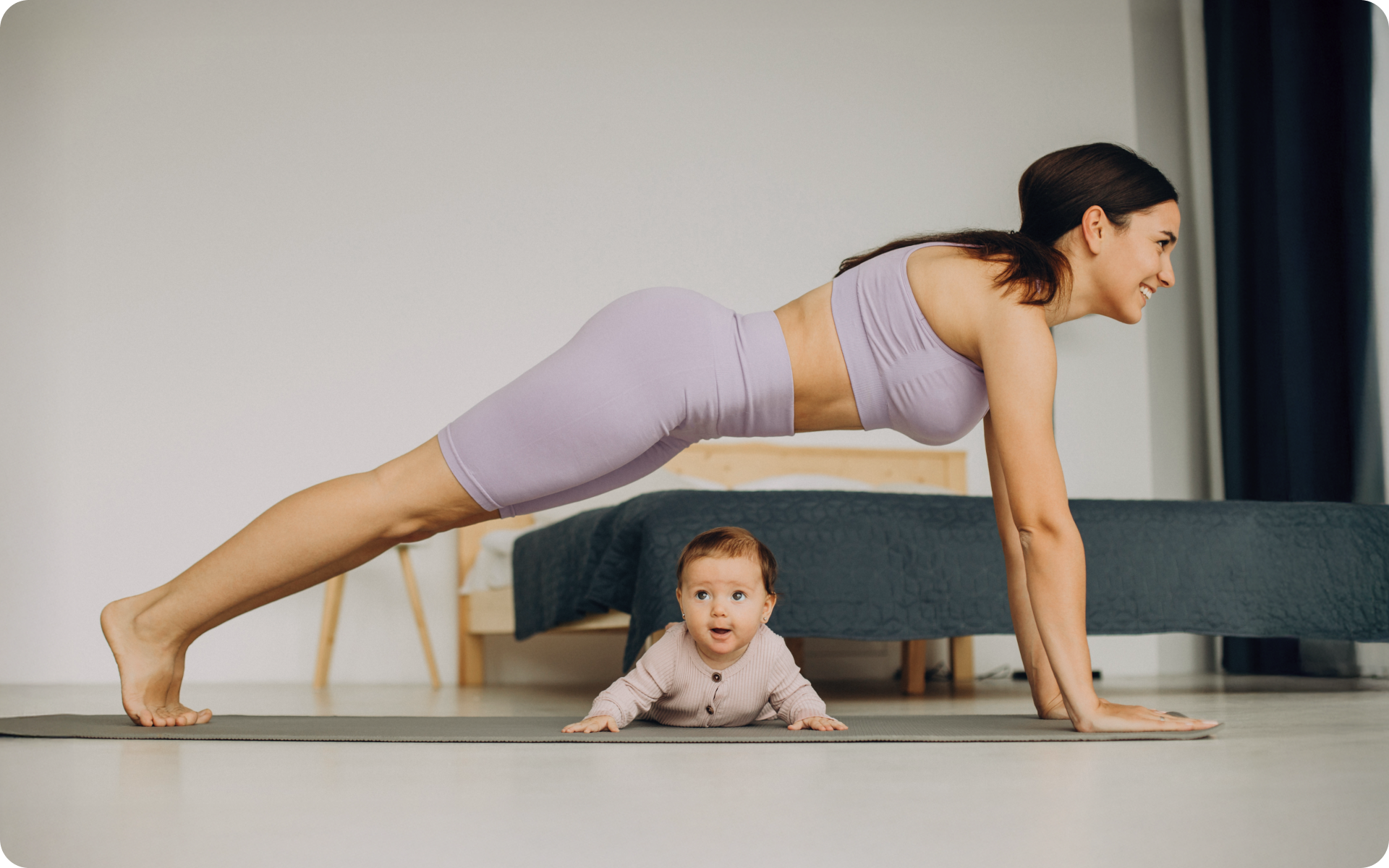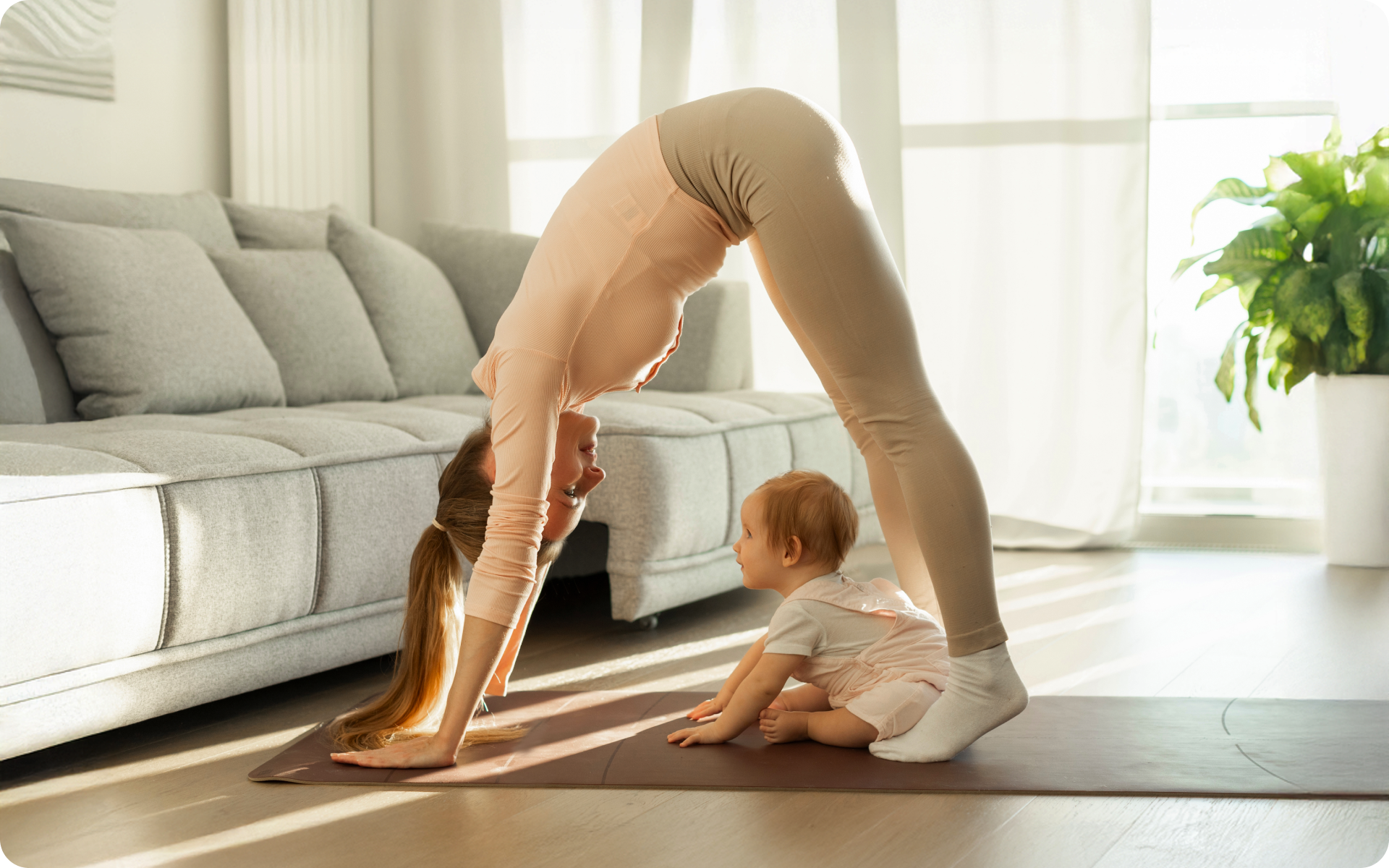Congratulations on reaching the six-week postpartum mark! This is a significant milestone on your recovery journey. While you may be keen to jump back into a more structured fitness routine, it’s essential to approach exercise with care and awareness.
Your body has undergone incredible changes over the past nine months, and recovering takes time. This guide will help you understand what’s happening with your body at this stage, which exercises are more gentle for you, and how to create a balanced 6-week postpartum workout plan to rebuild your strength gradually. We’ll cover a full workout program, exercises to avoid, and answer some common questions new moms have about returning to fitness.
Always consult your physician before you start any recovery fitness program to make sure that it’s suitable for your specific needs.
Are You Fully Ready 6 Weeks Postpartum?
The six-week check-up with your GP is often seen as the green light to resume normal activities, including exercise. However, this appointment is more of a check-in on your physical and mental well-being, not a definitive “clearance for exercise”.
By six weeks, your uterus has likely contracted back to its pre-pregnancy size, and any postpartum bleeding may have reduced significantly, or stopped altogether. However, beneath the surface, your body is still going through a transformation. The connective tissues that stretched during pregnancy are still undergoing changes, and hormonal levels can take months to rebalance, particularly if you’re breastfeeding (1).
Several factors can affect your journey (2):
- Sleep Deprivation: The cumulative lack of sleep can significantly impact your energy levels and your body’s ability to transform.
- Aches and Tension: Repetitive movements such as feeding, lifting, and carrying your baby often lead to back, neck, shoulder, and wrist tension.
- Hormonal Changes: It’s common to experience hair loss as your hormones return to pre-pregnancy levels.
- Pelvic Wellness: If you experienced pelvic discomfort during pregnancy, it may still be present. Your pelvic floor muscles have been stretched and weakened, which makes them vulnerable to injury if you return to high-impact exercise too soon.
It’s highly recommended to ask your GP for a referral to a women’s health physiotherapist for a comprehensive physical assessment. This is becoming a standard of care in many places and is invaluable for a safe return to exercise.
Reasons why BetterMe is a safe bet: a wide range of calorie-blasting workouts, finger-licking recipes, 24/7 support, challenges that’ll keep you on your best game, and that just scratches the surface! Start using our app and watch the magic happen.
What Exercises Can I Do at 6 Weeks Postpartum?
At this stage, your focus should be on gentle, low-impact movements that help you reconnect with your body, particularly your core and pelvic floor. Pilates is an excellent option because it emphasizes the “ABCs”: Alignment, Breathing, and Centering. These principles are foundational for restoring core strength and stability (3).
Here are some gentle exercises to incorporate into your workout 6 weeks postpartum.
Spinal Flexion: Cat-Cow
This gentle movement soothes your brain-body connections and mobilizes the back.
- Start on all fours with your hands under your shoulders and your knees under your hips.
- Breathe out and gently round your spine, tucking your tailbone and dropping your head. Think of creating a “C” curve.
- Breathe in and hold the stretch, feeling the space open up in your back.
- Breathe out again as you return to a neutral spine, lengthening from your tailbone to the crown of your head.
- Optionally, breathe in as you open your chest forward, creating a gentle extension in your upper back without collapsing your lower back.
- Repeat for 10 cycles.
Spinal Extension: Dart
This is the perfect exercise if you have the “mom hunch” from feeding and carrying your baby. It strengthens the mid-back muscles crucial for good posture.
- Lie on your stomach with your forehead resting on a small towel. Let your arms rest by your sides with your palms up.
- Breathe out as you lengthen your head away from your spine and peel your chest off the floor. Keep your lower ribs on the mat.
- Draw your shoulder blades down and together as you lift your arms, rotating them so your palms face the floor.
- Breathe in and hold this long “dart” shape.
- Breathe out and slowly release back down.
- Repeat up to 10 times.
Spinal Rotation: Hip Rolls
This twisting exercise feels great and targets your oblique abdominal muscles.
- Lie on your back with your knees bent and your feet flat on the floor. Your knees and feet should be together.
- Extend your arms out to the sides in a “T” shape or a wide “Y” shape above your head for a deeper chest stretch.
- Breathe out and roll your connected knees to one side, allowing your pelvis and spine to rotate sequentially. Keep your opposite shoulder blade on the floor.
- Breathe in to hold the stretch.
- Breathe out and use your core muscles to control the return to the center.
- Repeat up to 5 times on each side.
Lateral Flexion: Pliés with Side Reach
This move strengthens your glutes and is great for practicing alignment while providing a great side-body stretch.
- Stand with your heels together and your toes about hip-width apart.
- Breathe out as you bend your knees over your toes into a plié. At the same time, reach your left arm up and over to the right for a side bend.
- Keep your pelvis square and feel the stretch along your left side.
- Breathe in to return to the center.
- Repeat on the other side. Aim for 10 repetitions in each direction.
Pelvic Floor and Core: Pelvic Tilts
This foundational exercise shows you ways you can work with your deep core and pelvic floor muscles.
- Lie on your back with your knees bent and your feet flat on the floor.
- Place your hands on your lower belly.
- Breathe out and gently tuck your tailbone, tilting your pelvis so your lower back presses lightly into the mat.
- Breathe in and release, allowing your pelvis to rock the other way into a slight arch.
- Find the middle point where your pelvis is level. This is your neutral spine.
- Repeat the tilting motion slowly, focusing on the connection between your breath and movement.
Are you ready to explore other gentle ways to move your body? Read more about yoga for moms.
Read more: 10+ Postpartum Pilates Exercises for New Moms to Do at Home
A Good Recovery 6-Week Postpartum Workout Plan
This 20-minute workout uses the exercises described above to create a balanced routine. Remember to listen to your body and rest when you need to. You should aim to do this workout 2-3 times per week, with rest days in between.
Before you begin, gauge your preparedness: Are you feeling rested? Have you had enough water and food? Be honest with yourself. Pushing through exhaustion won’t help your transformation journey.
BetterMe will shake off your mental funk, rid you of your energy-zapping habits, and help you sculpt the body of your dreams. Intrigued? Hurry up and change your life for the better!
Workout (20 Minutes)
- Warm-up (3 minutes):
- Relaxation and Breathing (3 minutes): Lie on your back in the relaxation position (knees bent, feet flat). Focus on deep, diaphragmatic breaths. As you inhale, let your belly and ribs expand. As you exhale, gently engage your pelvic floor by visualizing lifting it “up and in”.
- Main Workout (15 minutes):
- Pelvic Tilts (2 minutes): 10-12 slow, controlled repetitions.
- Hip Rolls (3 minutes): 5 repetitions on each side.
- Cat-Cow (3 minutes): 8-10 cycles.
- Dart (3 minutes): 8 repetitions.
- Pliés with Side Reach (4 minutes): 8 repetitions on each side.
- Cool-down (2 minutes):
- Rest Position (2 minutes): From all fours, sit back on your heels and fold forward, resting your forehead on the mat. Breathe deeply into your back.
If you enjoy exercising from home, check out our other at-home workouts for moms.
What Exercises Should I Avoid at 6 Weeks Postpartum?
Your body is still going through changes, so certain movements can do more harm than good at this stage. You should avoid:
- High-Impact Exercises: Running, jumping, and HIIT workouts place significant stress on your pelvic floor and joints, which are still vulnerable due to the lingering effects of the hormone relaxin (4).
- Traditional Abdominal Exercises: Crunches, sit-ups, and planks can increase intra-abdominal pressure, potentially worsening diastasis recti (abdominal separation) (5).
- Heavy Lifting: Lifting heavy weights before your deep core is strong enough can strain your back and pelvic floor (5).
Read more: The Real Postpartum Workout Routine Every Mom Needs
Can You Lift Weights 6 Weeks Postpartum?
Many third-party organisations generally support a gradual return to exercise (6), but there’s no specific guideline on when to resume weightlifting. Most experts recommend avoiding heavy lifting in the initial postpartum period. Your body is still going through major changes and giving it time to rest should be your primary goal. It’s better to focus on bodyweight exercises and light resistance bands to nourish your foundational strength. When you do return to weights, start with very light loads and focus on perfect form. A women’s health physiotherapist can give you the most personalized recommendation.
Discover more ways to stay active with our guide to Mom Exercise.
This is highly individual. While gentle movement such as walking and pelvic floor You should avoid traditional ab workouts such as crunches. Instead, focus on deep core exercises that engage the transversus abdominis and pelvic floor, such as pelvic tilts and proper breathing techniques (5). A gentle, mindfully performed curl-up can actually be less challenging than getting out of bed, but it must be done with correct form and breath control. Yes, Pilates is excellent for a postpartum journey. It focuses on realignment, core strength, and pelvic floor wellness through low-impact, controlled movements. The principles of alignment, breathing, and centering are exactly what the postnatal body needs to transform gradually.Frequently Asked Questions
How soon is too soon for postpartum exercise?
exercises can often be started weeks after birth, more structured exercise should wait until you’ve been cleared by a healthcare provider (7). Always listen to your body (8).Can I do ab workouts 6 weeks postpartum?
Is Pilates good for postpartum?
The Bottom Line
Returning to exercise after having a baby is a journey, not a race. The 6-week postpartum mark is a time to honor your body’s transformation process and focus on reconnecting with your strength from the inside out. By prioritizing gentle, mindful movement and listening to your body’s cues, you can create a strong and resilient foundation for all your future fitness goals.
DISCLAIMER:
This article is intended for general informational purposes only and does not serve to address individual circumstances. It is not a substitute for professional advice or help and should not be relied on for making any kind of decision-making. Any action taken as a direct or indirect result of the information in this article is entirely at your own risk and is your sole responsibility.
BetterMe, its content staff, and its medical advisors accept no responsibility for inaccuracies, errors, misstatements, inconsistencies, or omissions and specifically disclaim any liability, loss or risk, personal, professional or otherwise, which may be incurred as a consequence, directly or indirectly, of the use and/or application of any content.
You should always seek the advice of your physician or other qualified health provider with any questions you may have regarding a medical condition or your specific situation. Never disregard professional medical advice or delay seeking it because of BetterMe content. If you suspect or think you may have a medical emergency, call your doctor.
SOURCES:
- Physiology, Postpartum Changes (2022, ncbi.nlm.nih.gov)
- Optimizing Postpartum Care (2018, acog.org)
- Pilates: What Is It? Should It Be Used in Rehabilitation? (2011, pmc.ncbi.nlm.nih.gov)
- Current Guidelines and Recommendations for Postnatal Exercise (n.d., physio-pedia.com)
- Guidelines for Prenatal and Postpartum Resistance Training (2023, intechopen.com)
- Physical Activity and Exercise During Pregnancy and the Postpartum Period (2020, acog.org)
- Maximizing Recovery in the Postpartum Period: A Timeline for Rehabilitation from Pregnancy through Return to Sport (2022, pmc.ncbi.nlm.nih.gov)
- Exercise after having a caesarean (2023, hse.ie)
- Pilates: how does it work and who needs it? (2011, pmc.ncbi.nlm.nih.gov)
